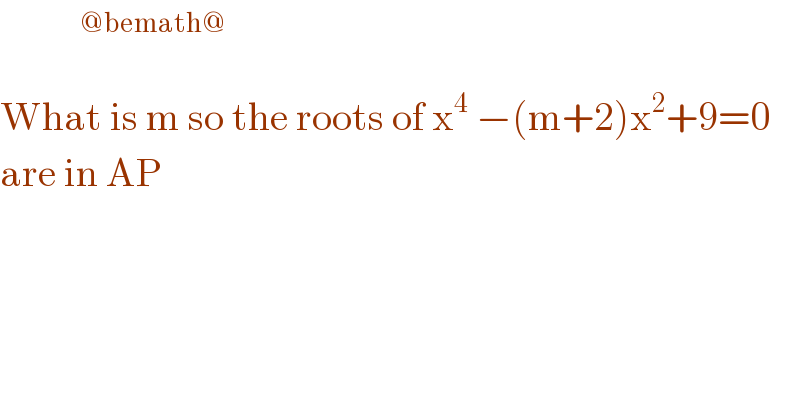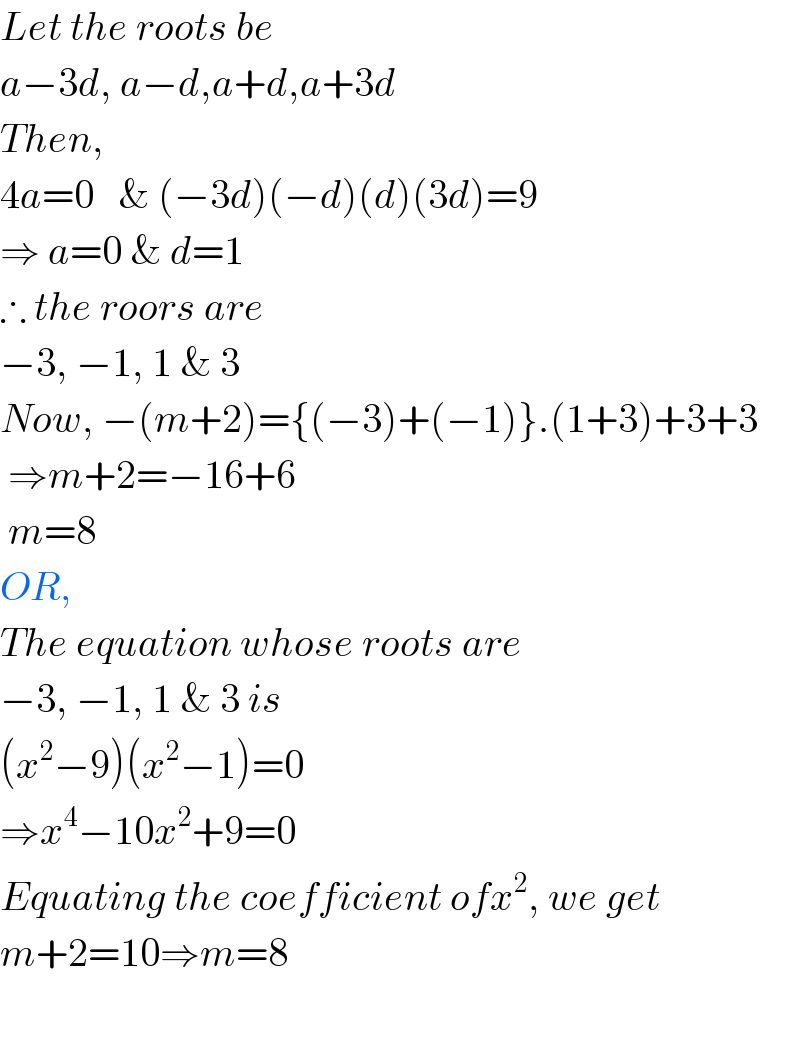
Question and Answers Forum
Question Number 106880 by bemath last updated on 07/Aug/20

Commented by Her_Majesty last updated on 07/Aug/20

Commented by bemath last updated on 07/Aug/20

Answered by john santu last updated on 07/Aug/20

Commented by Her_Majesty last updated on 07/Aug/20

Commented by john santu last updated on 07/Aug/20

Answered by 1549442205PVT last updated on 07/Aug/20

Answered by $@y@m last updated on 08/Aug/20

Commented by Rasheed.Sindhi last updated on 08/Aug/20

Commented by $@y@m last updated on 08/Aug/20

